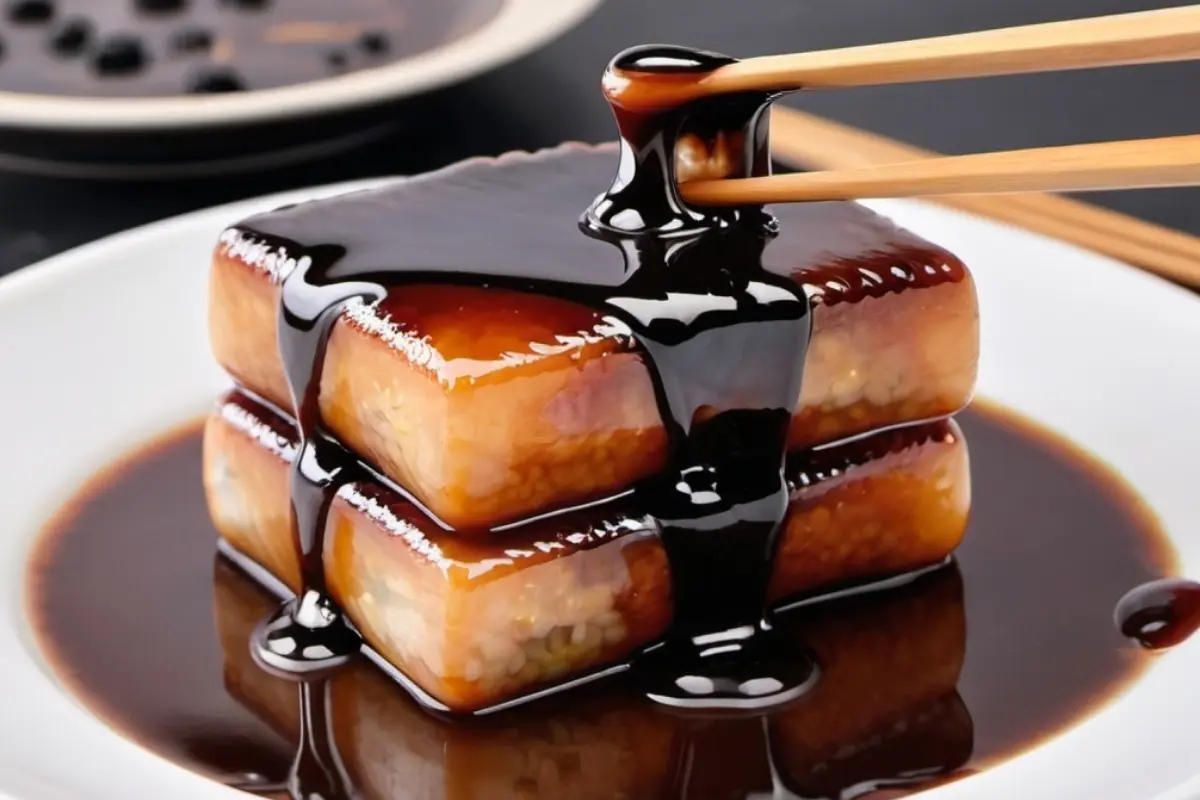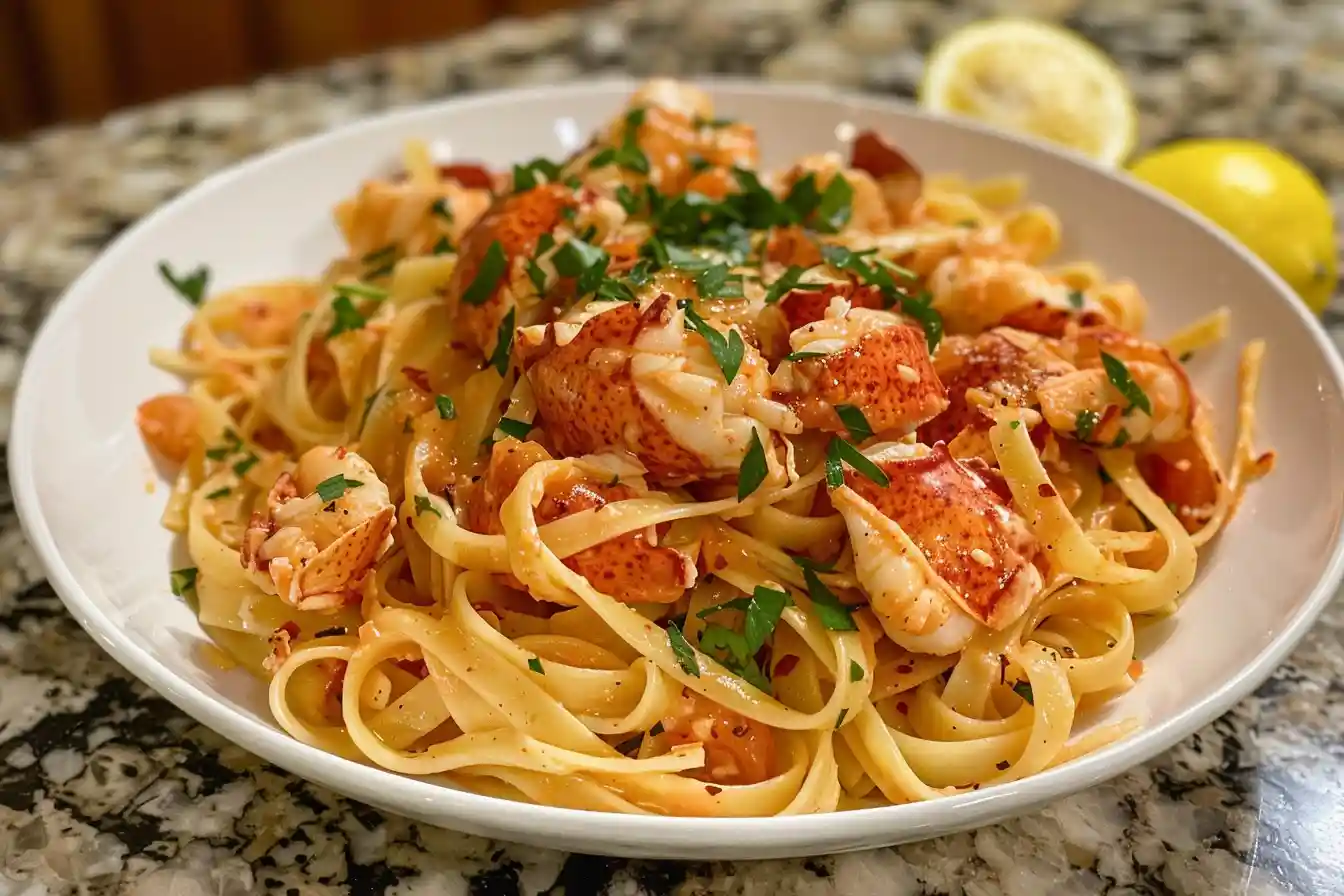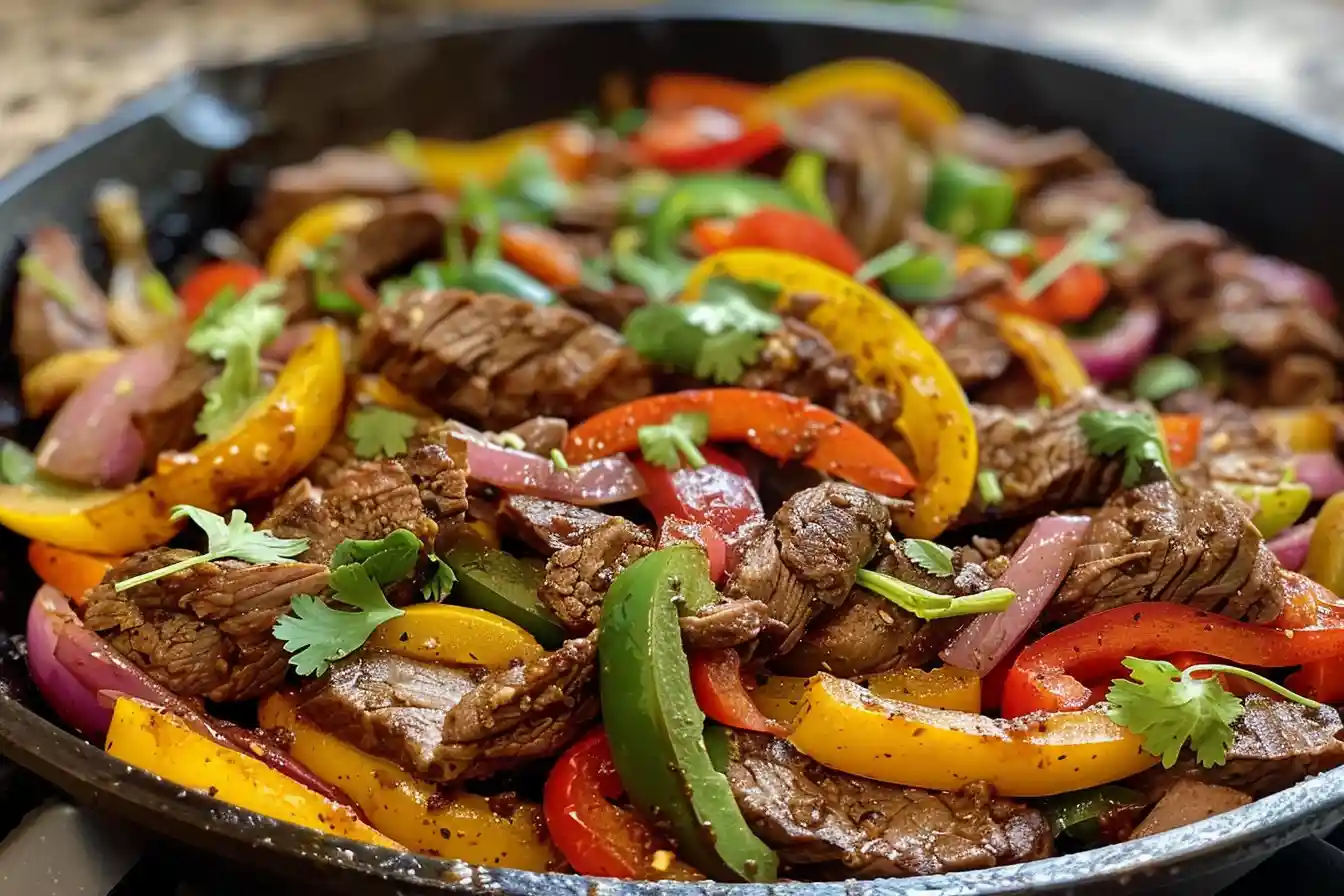Imagine discovering a versatile and mouthwatering method to elevate your dishes this sweet soy glaze recipe is exactly what you need. This delectable concoction is an essential addition to your kitchen arsenal, perfect for infusing a touch of sweetness and depth into a wide range of meals. Whether you’re glazing meat, drizzling it over vegetables, or enhancing the flavor of tofu, this recipe will become your go-to.
In this article, we’ll delve into the essentials of creating the perfect sweet soy glaze, exploring the ingredients, techniques, and variations that make it a culinary must-have.
What is Sweet Soy Glaze ?
A Brief History of Soy Glaze
Soy glaze, particularly sweet soy glaze, has deep roots in Asian cuisine. Traditionally, it was created to enhance the natural flavors of food without overpowering them. The glaze’s simplicity, made primarily from soy sauce and a sweetener, makes it a versatile addition to various dishes, especially in Japanese, Chinese, and Indonesian cuisines.
The Role of Soy Sauce in Cooking
Soy sauce, the base of this glaze, is a fermented condiment made from soybeans, wheat, and salt. Its umami-rich flavor is essential in many dishes worldwide, contributing a savory depth that’s hard to replicate with other ingredients. In a sweet soy glaze, soy sauce provides the salty, savory counterbalance to the sweetness, creating a harmonious flavor profile that enhances the dish without dominating it.
The Key Ingredients for Sweet Soy Glaze Recipe
Choosing the Right Soy Sauce
The quality and type of soy sauce you choose significantly impact the final taste of your sweet soy glaze. Here’s what to consider:
- Light Soy Sauce: This is commonly used for its balanced flavor and light color, making it perfect for dishes where you don’t want to darken the food too much.
- Dark Soy Sauce: Richer and slightly sweeter, dark soy sauce can add a deeper color and a more pronounced flavor to the glaze.
- Tamari: A gluten-free option, Tamari soy sauce is slightly less salty and has a richer taste, making it an excellent choice for those with dietary restrictions.
The Importance of Sweeteners
The sweet component of the glaze can come from various sources, each bringing a unique flavor:
- Sugar: Granulated white sugar is the most traditional sweetener, offering a clean, straightforward sweetness.
- Brown Sugar: Adds a molasses-like richness and a hint of caramel to the glaze.
- Honey: Provides a floral sweetness and a slightly thicker texture.
- Maple Syrup: Adds a distinct, earthy sweetness with a hint of smokiness.
Optional Additions for Enhanced Flavor
To give your sweet soy glaze a personal twist, consider adding these optional ingredients:
- Garlic: Freshly minced garlic adds a savory bite.
- Ginger: Grated ginger contributes a warm, spicy undertone.
- Red Pepper Flakes: For those who like a bit of heat, a pinch of red pepper flakes can add a nice kick.
- Citrus Zest: Lemon or orange zest adds a bright, fresh note.

Step-by-Step Sweet Soy Glaze Recipe
Preparing the Ingredients
Before you start cooking, gather all your ingredients. Here’s what you’ll need for a basic sweet soy glaze:
- 1/2 cup soy sauce (light or dark, depending on preference)
- 1/4 cup brown sugar (or your chosen sweetener)
- 1 tablespoon rice vinegar
- 1 teaspoon minced garlic (optional)
- 1 teaspoon grated ginger (optional)
- 1/4 cup water
- 1 teaspoon cornstarch (for thickening, optional)
Cooking the Glaze
- Combine Ingredients: In a small saucepan, combine the soy sauce, sweetener, rice vinegar, and water. If using garlic and ginger, add them to the mixture.
- Simmer: Place the saucepan over medium heat and bring the mixture to a simmer. Stir frequently to ensure the sugar dissolves completely.
- Thicken (Optional): If you prefer a thicker glaze, mix the cornstarch with a little water to make a slurry and stir it into the simmering sauce. Continue cooking until the glaze thickens to your desired consistency.
- Cool Down: Once thickened, remove the glaze from the heat and let it cool. It will continue to thicken slightly as it cools.
Tips for Perfect Consistency
- For a thicker glaze: Let the sauce simmer for a longer period or add a cornstarch slurry.
- For a thinner glaze: Reduce the simmering time or add a bit more water.
- Taste as you go: Adjust the balance of sweet and salty by adding more sugar or soy sauce to suit your preference.
Sweet Soy Glaze Recipe Variations
Spicy Sweet Soy Glaze
For a glaze with a kick, add 1-2 teaspoons of chili paste or sriracha sauce. This variation is perfect for those who enjoy a balance of sweet and spicy flavors, great for wings or grilled meats.
Garlic-Infused Sweet Soy Glaze
If you’re a garlic lover, double or even triple the amount of minced garlic. Cook the garlic slightly before adding the other ingredients to release its full flavor. This variation is excellent for robust dishes like grilled steak or roasted vegetables.
Citrus Sweet Soy Glaze
Adding the zest of one lemon or orange and a tablespoon of fresh citrus juice will brighten up your glaze. This variation pairs wonderfully with fish or chicken, giving the dish a fresh, tangy twist.
How to Use Sweet Soy Glaze ?
Glazing Meats and Fish
One of the most popular uses for sweet soy glaze is as a finishing touch for meats and fish. Brush the glaze on during the last few minutes of cooking to avoid burning the sugars. The glaze caramelizes beautifully, giving your dish a glossy, flavorful finish.
Enhancing Vegetables
Sweet soy glaze can also elevate the simplest of vegetables. Drizzle it over roasted carrots, broccoli, or Brussels sprouts to add a delicious sweet-savory contrast that complements the natural flavors of the veggies.
Adding Depth to Tofu and Plant-Based Proteins
For vegetarians and vegans, sweet soy glaze is an excellent way to add depth and richness to tofu, tempeh, or seitan. Marinate the proteins in the glaze before cooking, or use it as a finishing sauce to enhance the overall flavor.
Storing and Preserving Sweet Soy Glaze
Best Practices for Storage
After making your sweet soy glaze, allow it to cool completely before transferring it to an airtight container. Glass jars work best for storage as they don’t absorb odors and keep the glaze fresh.
How Long Does Sweet Soy Glaze Last ?
Stored in the refrigerator, your sweet soy glaze can last for up to two weeks. If you notice any changes in color, texture, or smell, it’s best to discard it and make a fresh batch.
Pairing Sweet Soy Glaze with Other Dishes
Rice and Noodles
Sweet soy glaze pairs beautifully with plain steamed rice or noodles, adding a burst of flavor with minimal effort. Simply drizzle the glaze over your cooked grains or toss your noodles in the sauce for an easy, flavorful dish.
Sushi and Sashimi
For sushi lovers, a touch of sweet soy glaze can replace traditional soy sauce, adding an extra layer of flavor to your rolls or sashimi without overpowering the delicate taste of the fish.
Grilled and Roasted Foods
From grilled chicken to roasted pork, sweet soy glaze is a versatile condiment that enhances the flavor of a wide range of grilled or roasted dishes. Brush it on during the last few minutes of cooking for a caramelized, sticky finish.

Health Benefits and Nutritional Information
Calories and Macronutrients
A typical serving of sweet soy glaze is relatively low in calories, making it a great way to add flavor without significantly increasing the caloric content of your meal. Depending on the ingredients, a tablespoon of sweet soy glaze contains around 20-30 calories, primarily from sugars and a small amount of protein.
The Nutritional Impact of Soy Sauce
Soy sauce is rich in sodium, which contributes to its savory flavor. While it does contain some protein and micronutrients like iron and magnesium, it’s essential to use it in moderation, especially for those monitoring their sodium intake.
Balancing Sweetness and Saltiness
The key to a successful sweet soy glaze is balancing the sweetness with the saltiness of the soy sauce. This balance not only enhances the flavor of your dishes but also ensures that the glaze is versatile enough to be used in various culinary applications.
Common Mistakes to Avoid When Making Sweet Soy Glaze
Overcooking the Glaze
Overcooking can cause the sugars in the glaze to burn, resulting in a bitter taste. To avoid this, keep a close eye on the sauce as it simmers and remove it from the heat as soon as it reaches your desired consistency.
Not Balancing the Flavors
A perfect sweet soy glaze requires a delicate balance between sweet, salty, and umami flavors. If one element overpowers the others, the glaze can taste off. Adjust the ratios of soy sauce, sweetener, and any optional additions to achieve a harmonious flavor profile.
Improper Storage
Storing the glaze in a non-airtight container can lead to it absorbing unwanted odors or becoming too thick. Always use an airtight container and refrigerate the glaze promptly after it cools to maintain its freshness and flavor.
Incorporating this sweet soy glaze recipe into your culinary repertoire opens up a world of flavorful possibilities. Whether you’re looking to enhance a simple dish or add complexity to a gourmet meal, this glaze is versatile, easy to make, and utterly delicious. By following the tips and variations provided, you can customize your glaze to suit any dish or dietary preference. So, next time you’re in the kitchen, whip up a batch of this glaze and watch as your dishes come to life with a perfect balance of sweet, salty, and umami flavors.
Frequently Asked Questions about Sweet Soy Glaze recipe
Yes, you can experiment with different types of soy sauce to suit your taste preferences or dietary needs. Light soy sauce is less intense, while dark soy sauce provides a richer flavor and color. Tamari is a great gluten-free option.
The best sweetener depends on the flavor profile you’re aiming for. Brown sugar adds a molasses-like depth, honey provides a floral note, and maple syrup introduces an earthy sweetness. Experiment with different sweeteners to find your favorite.
If your glaze isn’t thickening to your liking, you can add a cornstarch slurry (a mix of cornstarch and water) to the simmering sauce. Alternatively, let the glaze simmer longer to reduce it naturally, or simply use less water when preparing the sauce.
Yes, to make a gluten-free sweet soy glaze, use Tamari instead of traditional soy sauce. Ensure that any additional ingredients like vinegar or sweeteners are also gluten-free.
Absolutely! Sweet soy glaze works wonderfully as a marinade for meats, tofu, and vegetables. Marinate your proteins or veggies for at least 30 minutes before cooking to allow the flavors to infuse deeply.





